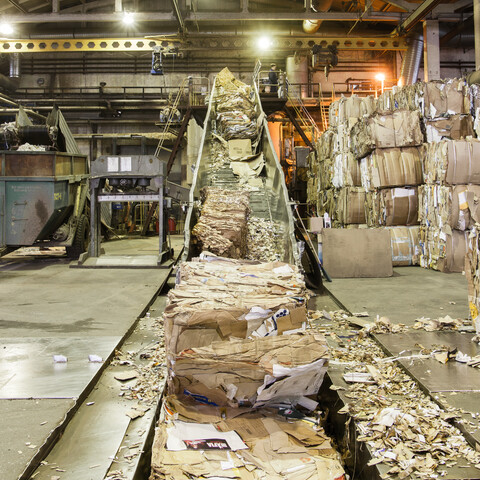A Closer Look at How the Paper Industry Achieves Sustainability
Sustainability is an important consideration across industries.
The paper industry was one of the first manufacturing industries to voluntarily set quantifiable sustainability goals. Quantifiable means they’re measurable so we can track our progress.
Since 2011, AF&PA members have made significant strides in sustainable practices. We met or exceeded many of the goals we set in 2011. Now, we’re building on our success and commitment with sustainability goals for 2030.
Let’s dive into how the paper industry is embracing sustainable practices.
Sustainable Forest Management

As a condition of membership, AF&PA members are committed to sustainable forest management and sourcing wood from responsibly managed, working forests.
Working forests are carefully and sustainably managed by landowners, foresters, engineers, scientists and harvest managers.
These professionals help take care of the forest to ensure the trees are healthy. 90% of the wood that is used to produce the essential paper and wood products that Americans use every day is sourced from private, sustainably managed working forests.
And, about 2% of working forests are harvested each year.
Resource Efficiency Through the Circular Economy
The paper industry is committed to optimizing resource efficiency throughout its production processes.
We also have an inherently circular supply chain.
It starts with sustainably managed forests which are continuously replanted to supply fiber and enhance the environment. Then it starts again with a highly developed recycling system to turn recycled paper and packaging into new products. Our industry’s manufacturing practices do more with less by:
- Maximizing efficient use of resources, including fiber
- Reusing water and other resources multiple times Utilizing manufacturing byproducts to produce carbon-neutral biomass energy
- And optimizing the use of non-renewable resources
Innovative technologies have led to significant reductions in water consumption, energy usage and greenhouse gas emissions.
Our 2030 goal, “Advance a Circular Value Chain Through the Production of Renewable and Recyclable Products,” will help strengthen the role our industry plays in the circular economy.
Paper Recycling and Waste Reduction

The paper industry is a recycling champion. It’s an important part of our manufacturing process.
About 80% of U.S. paper mills use recycled paper to make new products. The vast majority of Americans also have access to a community paper and paperboard recycling program.
The industry continues to invest in paper recycling. We’re investing in manufacturing infrastructure as well as recycling innovations.
One of the ways is innovative packaging design to make packaging more recyclable. Another is technology to recycle more kinds of paper products. Both innovations help to extend the useful life of fiber and promote product circularity.
Minimizing Our Carbon Footprint

The paper and wood products industry is a crucial part of the climate solution.
We took early voluntary action to reduce greenhouse gas (GHG) emissions. Between 2005 and 2022, combined Scope 1 and 2 emissions for AF&PA member U.S. pulp and paper mills decreased by 36%.
We’ve also improved our energy efficiency by more than 13.7% since 2005. This is largely due to increased use of renewable energy like biomass.
Sustainable Water Management

Water is an essential part of the pulp and papermaking process. That makes water management a critical part of our sustainable practices.
AF&PA members are constantly striving to find new ways to reduce, reuse and recycle water in the manufacturing process. Since 2005, AF&PA members have reduced water use by more than 8%.
Water can be reused 10 times or more throughout the pulp and paper mill process before it is discharged. And 88% of water used for production is treated in wastewater systems and returned to the environment.
Our 2030 goal to advance sustainable water management aims to build on our success and further our efforts. Sustainable practices are the foundation of the paper and wood products industry.
As a leader in sustainability, the industry aims to balance the demand for paper products with the need to protect and preserve our planet's valuable resources.
Explore how our industry is advancing sustainable practices:
